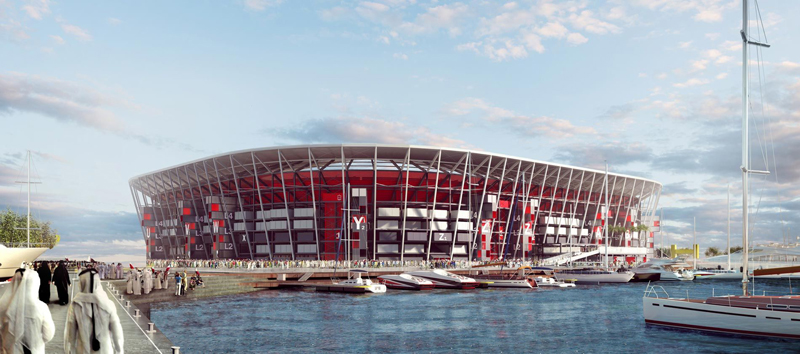
The containers at the construction site.
The first batch of 92 containers for Ras Abu Aboud Stadium has arrived on the construction site, Supreme Committee for Delivery & Legacy (SC) said.
In a tweet SC said that the first batch of containers for the first fully demountable stadium in FIFA World Cup history, has arrived on site and installation is set to begin in the near future.

Artist's impression of the final look of the Ras Abu Aboud Stadium stadium.
The 40,000-seat venue for Qatar2022 will be built using modular building blocks.
Constructed using shipping containers, removable seats and other modular "building blocks", not only will this innovative, 40,000-seat venue have a remarkable design, but it will be entirely dismantled and repurposed after the 2022 FIFA World Cup Qatar. Its parts will be used in other sporting or non-sporting projects, setting a new standard in sustainability and introducing bold new ideas in tournament legacy planning.

Artist's impression of the Ras Abu Aboud Stadium stadium.
According to SC website, excavations are complete and venue's foundations are filled with reinforced concrete. Work on drainage networks and other utilities has begun.
Ras Abu Aboud Stadium, designed by Fenwick Iribarren Architects, will be a spectacular venue for matches up to the quarter-finals of the 2022 FIFA World Cup Qatar. Following the tournament's conclusion, the stadium will be dismantled and make way for a waterfront development for local people to enjoy.

Artist's impression of the Ras Abu Aboud Stadium stadium.
The venue's temporary nature and clever modular design will mean that fewer building materials will be required than in traditional stadium building, helping to keep construction costs down.
And with other projects reusing the seats, roof and other components of the arena, parts of the venue will be utilised for years and even decades to come.
Minimising construction costs and ensuring regular future use are the key ingredients in making a new stadium – and sporting mega-events – sustainable.



